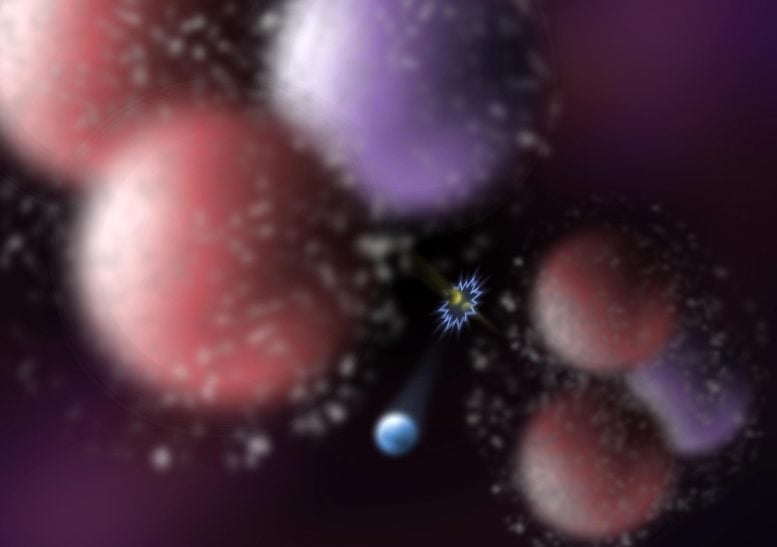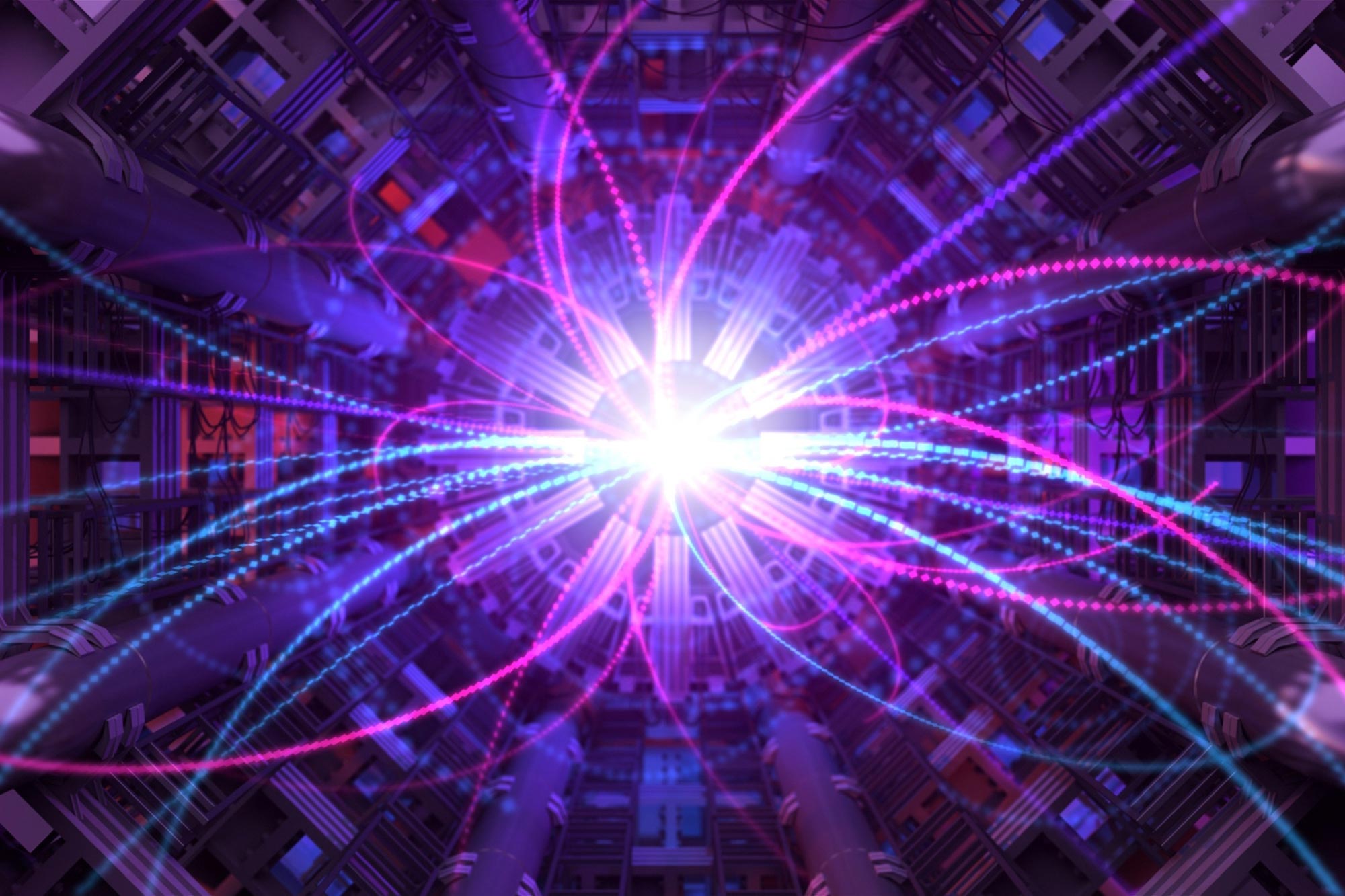By
Recent theoretical advancements have enhanced the understanding of the Higgs boson’s properties, focusing on its cross-section during gluon-gluon collisions. This research highlights the relevance of higher-order corrections and confirms the predictions of the Standard Model, with further investigations expected to clarify the potential for new physics.
New research confirms the Standard Model’s predictions about the Higgs boson while suggesting future data may reveal unknown aspects of particle physics.
The Higgs boson was discovered in the detectors of the Large Hadron Collider a dozen or so years ago. It has proved to be a particle so difficult to produce and observe that, despite the passage of time, its properties are still not known with satisfactory 
The Higgs boson (blue) may be created by the interaction of gluons (yellow) during proton collisions. Protons consist of two up quarks (red) and one down quark (purple), bound by gluons so strongly that in the sea of virtual particles (gray) more massive quarks and antiquarks, for example, beautiful quarks, may appear, the presence of which also affects on the birth process of the Higgs bosons. Credit: IFJ PAN
The Role of the Standard Model
The Standard Model is a complex theoretical structure constructed in the 1970s to coherently describe the currently known elementary particles of matter (quarks, as well as electrons, muons, tau, and the associated trinity of neutrinos) and electromagnetic forces (photons) and nuclear forces (gluons in the case of strong interactions, W and Z bosons in the case of weak interactions).
The icing on the cake in the creation of the Standard Model was the discovery, thanks to the LHC, of the Higgs boson, a particle that plays a key role in the mechanism responsible for giving masses to the other elementary particles. The finding of the Higgs was announced in mid-2012. Since then, scientists have been trying to gain as much information as possible about this fundamentally important particle.
Enhancing Higgs Boson Collision Analysis
“For a physicist, one of the most important parameters associated with any elementary or nuclear particle is the cross section for a specific collision. This is because it gives us information on how often we can expect the particle to appear in collisions of a certain type. We have focused on the theoretical determination of the Higgs boson cross-section in gluon-gluon collisions. They are responsible for the production of about 90% of the Higgs, traces of whose presence have been registered in the detectors of the LHC accelerator,” explains Dr. Rene Poncelet (IFJ PAN).
Prof. Michal Czakon (RWTH), co-author of the article in the prestigious physics journal DOI: 10.1103/PhysRevLett.132.211902




















Discussion about this post